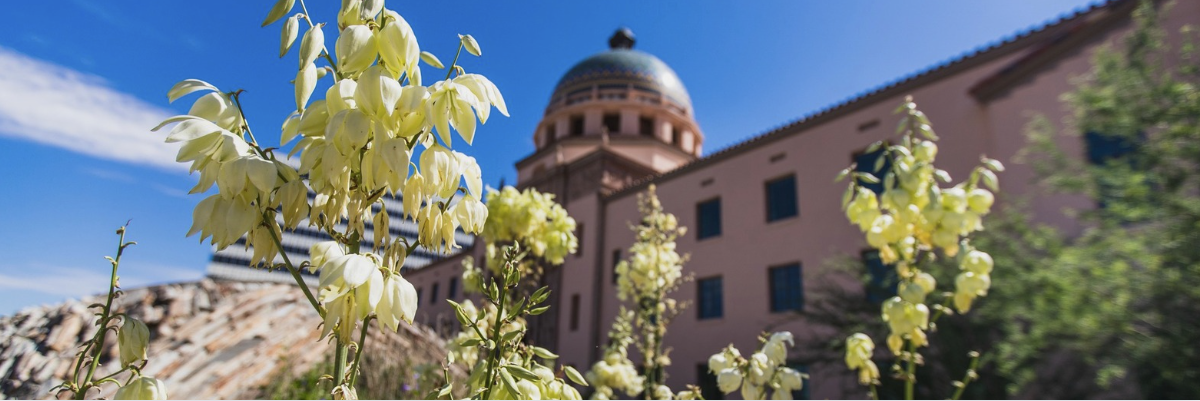Pima County


Covering an area of approximately 9,200 square miles, this is one of the oldest continuously inhabited areas of the United States. Native Americans have lived in this region from prehistoric times to the present, with the Tohono O'odham reservation the second largest in the nation.
Created in 1864, Pima County included approximately all of southern Arizona acquired from Mexico by the Gadsden Purchase.
In the middle of the 18th century, silver and gold discovered in the region drove development. And we've been growing ever since.
From a population of 395 in 1820, Pima County now has a population of slightly more than 980,000, by the 2010 Census count. Aside from our vibrant multicultural diversity, we're also unusual in that we're a very urbanized County, with more than a third of our population living outside of any incorporated cities or towns. The population is projected to reach 1.4 million by 2041.
Because this region lies at an ecological crossroad where habitats and species from the neo-tropics meet the Rocky Mountains and the Sonoran Desert, visitors and residents alike can share in a remarkable diversity of flora, fauna, and geology. Given its wealth of pre-Columbian archeology, history, and historic routes, such as the Anza Trail, as well as the living cultures of Native American tribes, Pima County is a hub for those looking for a unique sense of place and many learning opportunities.
A birder's paradise, more than 400 bird species may be found here annually, many of which are found nowhere else in the nation. Within Pima County are two cactus forests, Saguaro National Park to the north and Organ Pipe Cactus National Monument in the western portion.
There's no better way to experience the authentic Southwest than to breathe it in.
That's why Pima County has taken significant steps to make sure we retain for future generations what drew our ancestors to settle in this rugged area.
To that end, Pima County has purchased thousands of acres to preserve and protect our stunning landscapes and historic and cultural sites.
The County has led the effort to create "The Loop," which will provide 55 miles of multi-use paths that link diverse parts of the community, including Marana and Oro Valley. Cyclists, joggers, walkers, and others with active lifestyles can experience paths that meander through some of our most scenic landscapes.
The County has established dozens of parks and many miles of trails, allowing visitors to explore varied ecosystems, from Mount Lemmon's forests at 9,000 feet to our lower desert mountain parks, including the Tortolitas and the Tucson Mountains.
A major commercial and academic hub, Pima County is home to Tucson, the second-largest city in Arizona and the capital of the Arizona Territory from 1867 to 1877.
Some of the area's most popular attractions are on Pima County property whether folks want to catch a game or a concert at Kino Sports Complex, the area's largest sports and entertainment venue, or marvel at the technological wonders at the Pima Air and Space Museum or take a closer look at some of our unique wildlife at the Arizona-Sonora Desert Museum.
We've got inspiration. Come find it.

Covering an area of approximately 9,200 square miles, this is one of the oldest continuously inhabited areas of the United States. Native Americans have lived in this region from prehistoric times to the present, with the Tohono O'odham reservation the second largest in the nation.
Created in 1864, Pima County included approximately all of southern Arizona acquired from Mexico by the Gadsden Purchase.
In the middle of the 18th century, silver and gold discovered in the region drove development. And we've been growing ever since.
From a population of 395 in 1820, Pima County now has a population of slightly more than 980,000, by the 2010 Census count. Aside from our vibrant multicultural diversity, we're also unusual in that we're a very urbanized County, with more than a third of our population living outside of any incorporated cities or towns. The population is projected to reach 1.4 million by 2041.
Because this region lies at an ecological crossroad where habitats and species from the neo-tropics meet the Rocky Mountains and the Sonoran Desert, visitors and residents alike can share in a remarkable diversity of flora, fauna, and geology. Given its wealth of pre-Columbian archeology, history, and historic routes, such as the Anza Trail, as well as the living cultures of Native American tribes, Pima County is a hub for those looking for a unique sense of place and many learning opportunities.
A birder's paradise, more than 400 bird species may be found here annually, many of which are found nowhere else in the nation. Within Pima County are two cactus forests, Saguaro National Park to the north and Organ Pipe Cactus National Monument in the western portion.
There's no better way to experience the authentic Southwest than to breathe it in.
That's why Pima County has taken significant steps to make sure we retain for future generations what drew our ancestors to settle in this rugged area.
To that end, Pima County has purchased thousands of acres to preserve and protect our stunning landscapes and historic and cultural sites.
The County has led the effort to create "The Loop," which will provide 55 miles of multi-use paths that link diverse parts of the community, including Marana and Oro Valley. Cyclists, joggers, walkers, and others with active lifestyles can experience paths that meander through some of our most scenic landscapes.
The County has established dozens of parks and many miles of trails, allowing visitors to explore varied ecosystems, from Mount Lemmon's forests at 9,000 feet to our lower desert mountain parks, including the Tortolitas and the Tucson Mountains.
A major commercial and academic hub, Pima County is home to Tucson, the second-largest city in Arizona and the capital of the Arizona Territory from 1867 to 1877.
Some of the area's most popular attractions are on Pima County property whether folks want to catch a game or a concert at Kino Sports Complex, the area's largest sports and entertainment venue, or marvel at the technological wonders at the Pima Air and Space Museum or take a closer look at some of our unique wildlife at the Arizona-Sonora Desert Museum.
We've got inspiration. Come find it.